Which BMW 3 is better? Flip a coin.
By John Gilbert
The BMW 3-Series has risen to a position above and beyond the prestige of a normal icon. The “3” design tips off everyone that the car inside will perform and handle with something approaching flawless precision. The car’s reputation is such that all other manufacturers tend to introduce cars by claiming that they used the BMW 3-Series as their benchmark for handling.
BMW introduced the 3-Series with a press drive that included hot laps around Mazda Laguna Seca road-racing track, and further drives along the Pacific Coast Highway south of Monterey to Big Sur — one of the most scenic highways in the world.
Even then, however, I couldn’t wait for the chance to test-drive a 3-Series on Lake Superior’s North Shore, which happens to be my favorite scenic highway, and besides, it’s closer to home. The car comes with optional all-wheel drive, but in the midst of the hottest July on record in Minnesota, the traditional rear-drive was more than just fine.
At that, I was not fully prepared for what was to come when I got to spend a week driving the 6-cylinder BMW 335i. Two weeks later, I also got the chance for a week driving the 4-cylinder BMW 328i.
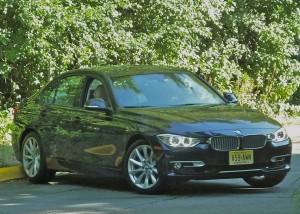
Less-expensive (slightly) and less potent (also slightly) 328i shares body and features with the 335i.
From the introductory tests, it seemed to me that the turbocharged 4 had sufficient power to eliminate any need for the more powerful BMW 335i, and it must be more economical too, right?
Not long after that, the pair of BMW 3s turned my assumptions upside down, and back again.
First, we had the 335i, with the priceless BMW inline 6-cylinder engine, measuring 3.0 liters of displacement, with dual-overhead camshafts operating the 24 valves.
While “just” a 4-door sedan, the 335i has something of a menacing look, and the drivetrain remains its inner jewel. One of the world’s truly fine engines, the 3.0 has TwinPower turbo technology, high-pressure precision direct injection, Valvetronic valvetrain, and Double VANOS t variable valve timing on both intake and exhaust valves. The 3-Series can be had with any flavor of 3.0-liter engines. The test car is twin-turbocharged, boosting power up to 300 horsepower and 300 foot-pounds of torque, allowing it to zip around with power and class.
The sticker shock reads $42,400 for base price, with options pushing the final tag to $55,870. That’s a lot, but it seems more reasonable after you spend some time appreciating the basic car plus the added features.
Driving on metropolitan highways and streets, the 335i exudes a certain class that approaches hotter sports cars and is far above normally recognized sporty sedans. Handling is flawless, which is no surprise, and while the car is smaller than most midsizers and more like a compact, although rear seat room is certainly adequate.
Performance is smooth and precise, harnessed by the Sport Line’s adaptive suspension off the M3 design, and with the Sport automatic transmission, which has eight speeds. Drivers can control things with paddles mounted within thumb’s reach on the steering wheel. I only really pushed the car once, and that was coming easterly on I-610 north of Minneapolis, where taking the Duluth exit north requires a left exit, which winds onto an overpass before curving gradually to the right, then more sharply, before finally hooking in a decreasing-radius arc. It is not what traffic engineers could possibly have thought would be the safest alternative for normal cars, but it is squeezed into a tight bit of real estate and is pure pleasure in a great-handling car.
Knowing the curve well, and having the pleasure of nobody around me, fore or aft, I went into the last part of the turn where the sign advises 25 mpg; I had downshifted a couple times, but was still going more like 47 mph. The car was so planted that I accelerated hard the rest of the way around, and we sailed onto Interstate 35 smoothly. It was close to breathtaking.
You can cheat with that engine, using console controls to push a button to engage “sport,” or clicking another one to get “sport plus.” I would recommend sport plus only on perfectly smooth surfaces, or at a race track. But sport works just fine as a compromise to quicken and raise shift points and tighten the suspension. Read more
Shelby GT500 sets iconic standards for 2013
By John Gilbert
A lot of people give nicknames to their favorite cars. “Old Betsy” has given way to a lot of catchier, more contemporary and more personalized monickers. This one could be “Silver Bullet,” or maybe “Blue Streak.” It also could be called outrageous, because in this fuel-economy-conscious era its primary objective is to be mind-boggling fast, every time you touch the throttle, in any of six manually selected gears.
The car in question is the 2013 Shelby GT500, a rocket on wheels that is earthbound, if just barely. The Shelby GT 500 I “owned” for a week-long coexistence was “ingot silver metallic,” with a wide, perfectly contrasting blue stripe running down from its roof, hood and front and rear ends.
Ford claims to have topped 200 miles per hour in in Europe during finishing test runs for this 665 horsepower mind-blower. Others have written that the car won’t go a tick over 198. No sane person, of course, would attempt that unless on a race track, or on a German autobahn in those regions where speed limits are still unlimited. The thrill, for those willing to lay down $60,000 for the ultimate ponycar, is to have the capability, just the potential, to display enormous power every time you turn the key and let out the firm but not-unworkable clutch pedal.
The newest generation of Shelby GT is the latest in a succession of hot-rod Mustangs that were first built by Carroll Shelby, and then recreated to Shelby’s demanding standards back in the late 1960s. To me, the most stunning of them all was the 1969 Shelby GT, which stayed almost the same for 1970, then veered off into other iterations. I admit I’m prejudiced, though, because I owned a 1970 Boss 302 Mustang, and after it got rear-ended and nearly destroyed by a drowsy truck-driver at a rural construction stop, I found a badly treated used Shelby and bought it, then had the sleek body fitted onto the platform and drivetrain of my Boss 302.
The car has moved on, but the name Shelby always retained its magic. I thought that Ford had undercut Carroll Shelby when it developed the Boss 302, and Shelby moved on to other things, working for a new Oldsmobile venture for a while, and employed by Dodge when it built and introduced the Viper. I had met Carroll Shelby when he ran a Trans-Am race team of Mustangs, and I had a wonderful chance to have lunch with him in Dallas, at the Viper introduction. I got Shelby to autograph the white-on-white cap they issued, and I still have it.
Ford lured the aging and infirm Shelby back into the company a few years ago, which was fitting. It was more fitting that the last time I saw Carroll Shelby was only a short time before he died. It was back in November of 2011 in Los Angeles, where this newest generation of Shelby GT500 Mustang was introduced, on the eve of the first media day at the Los Angeles Auto Show.
As befitting Shelby’s style of iconoclastic rebel, that press party was a coup. The assembled media was dazzled that Ford, which had just turned out a cluster of small cars that ran clean and could attain 40 miles per gallon, would unveil a 2013 Shelby GT500 with 662 horsepower and 631 foot-pounds of torque from a revised and supercharged 5.8-liter, dual-overhead-camshaft V8. The coup came the next morning, when Chevrolet had secured an early-morning press gala at the show to introduce its new ZL-1 Camaro. Chevrolet officials understandably gushed about its enormous tally of 580 horsepower and 556 foot-pounds of torque from a supercharged 6.2-liter Corvette V8 — because they didn’t know the car had been upstaged by 82 horsepower and 75 foot-pounds of torque at Ford’s party the night before. Read more
Jaguar XKR-S Coupe renews dream of XKE
By John Gilbert
After easing the new Jaguar XKR-S coupe nose-first up to the curb, I climbed out, locked it with the remote, and was walking slowly away, unable to resist the urge to look back at the car’s beautifully coordinated lines. I didn’t even see the fellow approaching from the other direction, but I heard his voice.
“That’s as exotic as it gets,” he said, making more of a statement than a question that needed no answer.
I smiled at him and nodded in agreement. “I mean, you hear about Ferraris and Lamborghinis, but they can’t be any more exotic than this car.”
He was right. The new XKR-S is a long, low, slinky, sexy car, either in coupe or convertible form. This one happened to be the coupe, and it was the cause of a recurring dream for me. I suppose the dream began back when I was a young driver, back in the 1960s, and as I had pulled over in the dark of night on Highway 61, where flashing lights had indicated a patrol car had stopped, fortunately for only a minor accident.
Headlights approached, and a car arrived shortly behind them. Only it wasn’t just another car. When the occupants realized nothing serious had happened, they made a u-turn and drove away, revving to a high-pitched scream as their car disappeared around the corner and into the darkness. The car was a Jaguar XK-E, and its image was riveted in my mind as the most exotic car I had ever seen, first-hand, on the streets or highways near Duluth.
The car, and the British company, have undergone a number of changes over the last 40 years, and the letter designation of the Jaguar sports car has escalated. It is up to XKR by now, but the car has never lost its dreamy characteristics, even though it has gained considerably in the areas of sophistication, technology and performance.
You’ve heard of recurring nightmares, but recurring dreams? My dream may have had a preview way back then on the dark Hwy. 61, but the more solid part of the dream was the brief opportunity to drive the new XKR-S at Road America, the 4-mile road-racing course at Elkhart Lake, Wis. There was a nice mix of cars and automotive media-types when the Midwest Auto Media Association (so help me, it’s MAMA), gathered nearly 100 of each for a two-day performance venture. Media folks have the opportunity to select any car and take it out for a one-lap run, presumably keeping speed within reason.

All the lines come together at the spoiler-topped rear, with quad pipes underscoring the "Leaper" emblem.
There were several high-performance cars, ranging from a Corvette, Camaro ZL-1, Cadillac CTS-V hat trick of coupe, sedan, and wagon, and a similar hat trick from Mercedes, including C63 AMG coupe, SLK55 AMG, and SLS Roadster, plus BMW turbocharged sedans, a couple of Audi sedans, a Lancer Evolution GSR, a Nissan GT-R, Lexus GS F, Subaru BRZ, Porsche Carrera S, Genesis Coupe R-Spec, Volkswagen Golf R, Taurus SHO, Mustang Boss 302, Dodge Challenger and Charger SRT8s, Chrysler 300 SRT8, and a Jeep Grand Cherokee SRT8. I drove most of them, on the road course, or later on an autocross, and all were impressive in their various manners.
But I was the most impressed after strolling past the gathered lineup of high-performance cars when I decided to try a dark, black Jaguar XKR-S. I waited in line in the pit area, then was signalled out on the track. Unrestrained by any speed limit, I was pushed back into the seat before Turn 1, then I whistled around the turn and down through Turn 2. That leads onto a long, slightly curving straightaway that ends with a 90-degree left turn at the bottom of an abrupt hill. The Jag felt so comfortable, I had no problem building the speed up through the automatic transmission.
As I swept down the hill, knowing full well I’d have to harness all that speed for the sharp turn, I glanced at the speedometer: It read 140. The brakes were easily up to hauling down from that speed, and I continued around that swift lap before cruising up the exit and back to the paddock parking place. Read more
Malibu hustles to join midsize maze
By John Gilbert
In the face of onrushing new midsize cars from competitors, Chevrolet answered with a pre-emptive move — hustling out the 2013 Malibu so far ahead of plans that the car virtually beat its own engine to the showrooms.
The Malibu rekindled fond memories when it returned after a decade of extinction in the mid-1990s, and it might rekindle memories of Chevrolet’s once-lofty status for producing state-of-the-art midsize sedans if the totally redone 2013 model lives up to its initial ratings.
Chevrolet undoubtedly knew midsize competition was fierce and getting fiercer, as the Toyota Camry segment king has already been revised, and the Hyundai Sonata and Kia Optima Korean breakthrough siblings challenged for prominence. A new Nissan Altima generation has just been introduced too, soon will be joined by the renewed Honda Accord and the much-publicized new Ford Fusion.
If a drastic measure was called for, the new Malibu is taking a healthy swing at the challenge a year ahead of original schedule. It will be offered only as a 4-cylinder Eco, with GM’s “eAssist” mild hybrid scheme, while General Motors finishes building its all-new 2.5-liter 4-cylinder, which should be available later in 2012. Even then, the pair of 4-cylinders will be the only choices, as Chevy joins the trend of dropping V6es in favor of higher-output 4s with far better fuel economy.
Styling has been a feature of Malibus since the 1960s, when it was born as a fancy upscale model of the Chevelle. When Malibu was brought back in 1997, it was nice enough, but seemed to slip a little when some competitors in the congested midsize class took some bold styling steps. The new Malibu makes up for some of that.
It has the new-signature corporate grille, with a large trapezoidal opening, split by a horizontal bar above the midpoint. That identifying trademark first appeared on the previous Silverado pickup redo, and has since proliferated to distinguish the Volt, Cruze, subcompact Sonic and mini-car Spark, along with the Malibu.
That’s one of the issues with a so-called “signature” look: At a glance, you’re uncertain what’s coming at you, and Malibu buyers might be less than thrilled that their front end has a Cruze-Sonic look. It is, however, an asset from the rear, where the sculpturing of the rear bumper and tail, with four square taillights, and a spoiler lip designed into the trunklid, make a strong resemblance to the stylish and muscular Camaro.
Overall, the look retains the appearance of the outgoing Malibu, until you scrutinize all the elements, even though the car now switches to a shorter-wheelbase platform. The hood has some nicely contoured lines that sweep back to the “A” pillar framing the windshield and front doors, and the silhouette has a pleasant, contemporary look. Read more
Volvo C70 Polestar adds potency to flair
John Gilbert
Convertibles always have held the majestic position at the top of the automotive food chain, as the most likely vehicle to be admired and craved. A close second would be two-door coupes, some of which are more desirable than some convertibles. Even those who find convertibles and coupes too small for their purposes still dream of owning one or the other, and greatly envy those who do.
That’s where the 2012 Volvo C70 is parked, precisely at that intersection as if to prevent anyone from having to make that choice. The C70 is not just a convertible that is ineffective in foul weather, and it’s not just a hardtop that refuses to allow all of the sunshine in. It is the best of both worlds.
If the sun is shining and the temperature sufficiently warm, flip a button on the console and things start whirring: The rear decklid rises toward the rear, the steel roof unlatches itself from the windshield and rises up, folds itself into a double-deck sandwich, which moves rearward and drops into the perfectly shaped receptacle created by the raised decklid. The lid then closes with a secure click. Just like that, the sleek coupe you had been sitting in 30 seconds ago is transformed into a stunning convertible.
Putting it back up is just as swift, because the same switch reopens the lid and starts the roof on its unfolding rise out of the stowage bin, finally refastening itself to the windshield. You can drop the top at home or in a parking lot, or really show off by lowering or raising the roof at a stoplight while waiting for the red to go green, which is pretty amazing.
True, there are other hardtop-convertibles from Germany, Japan, and the U.S., which operate approximately the same way. All of them have one thing in common — they look great with the top down. But all of the others look a little bit bulbous with the roof up, next to the Volvo C70. The C70 looks exceptional with the top down, and it also looks lean and sleek with the top up, especially when you lower all four windows for a true, pillarless hardtop.
My opinion of the hardtop coupe’s look was reinforced during my week-long road test of a new C70 Inscription model. I was enjoying the car both top up and down while driving around the Twin Cities of Minneapolis and St. Paul, then I drove my usual 165 miles north to Duluth, Minnesota, where Interstate-35 has its annual summertime dose of single-lane construction. Cruising along with the top down in 82-degree warmth, I approached some dark clouds and a few drops of drizzle appeared on the windshield. You always get the feeling you could go fast enough to let the raindrops hit the windshield or else go harmlessly over the passenger compartment, but being more reasonable than that, I took the next exit. In seconds I had raised the top and returned to the freeway, just as the rain intensified.
About 20 miles later, I had passed through the rain and the sun reappeared. I didn’t want to pull off the freeway again, but I also much prefer fresh-air driving to enclosed air-conditioning, so I continued on cruise-control in the right lane at 70 mph, and lowered all four windows. Another car was moving up to pass me in the left lane, and I was unaware that somebody was in the back seat of that car until a hand appeared in the right rear window with its thumb upraised. Whomever it belonged tow had observed my window-lowering and felt compelled to signal a thumbs-up for how slick the metallic black C70 was as two-door hardtop. If he was impressed at the dropping of the windows, it would have been fun to see his reaction at a roof-lowering demonstration. But not at 70 mph. Read more


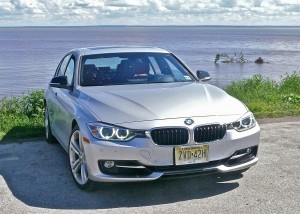
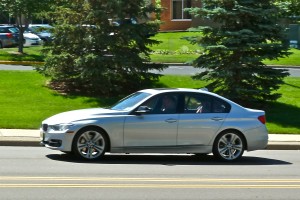
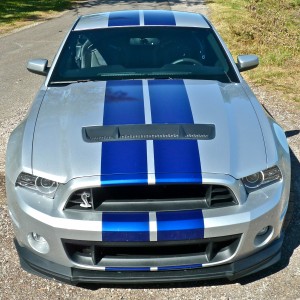

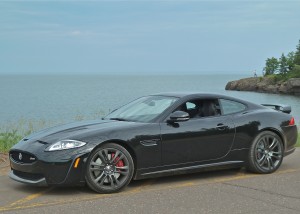
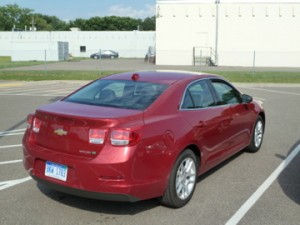
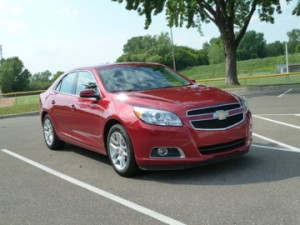
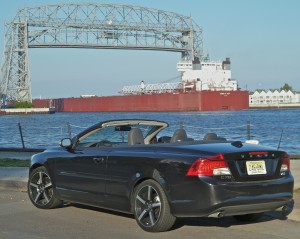
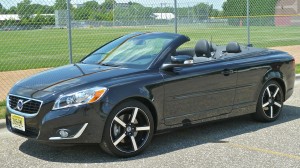

 John Gilbert is a lifetime Minnesotan and career journalist, specializing in cars and sports during and since spending 30 years at the Minneapolis Tribune, now the Star Tribune. More recently, he has continued translating the high-tech world of autos and sharing his passionate insights as a freelance writer/photographer/broadcaster. A member of the prestigious North American Car and Truck of the Year jury since 1993. John can be heard Monday-Friday from 9-11am on 610 KDAL(www.kdal610.com) on the "John Gilbert Show," and writes a column in the Duluth Reader.
John Gilbert is a lifetime Minnesotan and career journalist, specializing in cars and sports during and since spending 30 years at the Minneapolis Tribune, now the Star Tribune. More recently, he has continued translating the high-tech world of autos and sharing his passionate insights as a freelance writer/photographer/broadcaster. A member of the prestigious North American Car and Truck of the Year jury since 1993. John can be heard Monday-Friday from 9-11am on 610 KDAL(www.kdal610.com) on the "John Gilbert Show," and writes a column in the Duluth Reader.